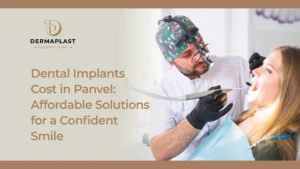Platelet-rich plasma (PRP Treatment) is a substance that’s thought to promote healing when injected.
Plasma is a component of your blood that contains special “factors,” or proteins, that help your blood to clot. It also contains proteins that support cell growth. Researchers have produced PRP by isolating plasma from blood and concentrating it.
The idea is that injecting PRP into damaged tissues will stimulate your body to grow new, healthy cells and promote healing. Because the tissue growth factors are more concentrated in the prepared growth injections, researchers think the body’s tissues may heal faster.
The treatment hasn’t been definitively proven. It also hasn’t been approved as a treatment by the Food and Drug Administration (FDA). However, famous athletes have been known to use these injections to help heal injuries.
PRP Treatment Process for Hair Loss?
PRP treatment for hair loss is a three-step process:
- Firstly, the doctor will draw blood from our arm. The blood will be put inside a centrifuge that will separate the various components of the blood, including plasma and the blood cells.
- After the centrifuge machine has separated the different components, the blood will be divided into three components. These include blood cells, platelet-rich plasma and platelet-poor plasma. The platelet-rich plasma will then be drawn out.
- The final step involves injecting the plasma, which is filled with platelets, straight on the scalp. This process is repeated over several sessions over a period of several months. Maintenance sessions are also required that typically last for about another three to six months. These cycles are repeated to maintain the results for a longer period of time.
However, many experts are still a bit skeptical about how exactly plasma works on the scalp for hair restoration and in what conditions. They say more research is needed on this subject matter.
Side effects of PRP Treatment
Some experts also point out that PRP treatment might have some side effects. Thankfully, communicable diseases are not among them. This is because in PRP treatment, it is your own blood that is getting re-injected into the scalp. Certainly, people would have been at risk had outside blood been injected. But in PRP treatment, this is not the case.
Nonetheless, there still might be certain other effects: There may be injury to blood vessels, infection, calcification at the injection points and scar tissues. You also might have a negative reaction to the anesthetic that is used in the therapy.
Therefore, it is imperative that you go to the right set of professionals possible in order to get your PRP treatment for hair loss. Ideally they should take all the necessary precautions that can prevent the manifestation of such side effects. In case these sessions do not work for you then you need to undertake better treatments for your hair loss.
Eligibility for PRP Treatment
In certain cases, you might not be eligible for PRP treatment. These include acute or chronic infections, chronic liver disease, chronic skin diseases, metabolic disorders, platelet dysfunction syndrome, sepsis, thyroid and low platelet count.
If you are suffering from any one of the diseases, then you should avoid getting a PRP treatment. If any of these is an underlying condition of which you are unaware of, then it is always better to get an appropriate medical opinion in order to consider whether this treatment is for you or not.
How far is PRP Treatment Effective for Hair Loss?
PRP hair treatment has been used since the 1980s for hair restoration. However, doctors are still doubtful regarding the efficacy of the PRP treatment process for hair loss. The treatment does not guarantee any results. Sometimes PRP treatment for hair growth must be combined with other procedures for effective results which in essence again making it difficult to understand if at all PRP treatment is doing any actual improvement or not.
In general, it may be concluded that PRP results for hair growth might vary from one person to another. There are a variety of other treatments available for hair restoration. These include surgical options like Follicular Unit Extraction.
Speak to your doctor or hair expert to know which one works the best for you. If you have an underlying disease, which is leading to hair fall, then consulting a doctor becomes even more crucial. You should first get treated for the underlying cause before you start with a PRP hair growth procedure.
Takeaway
PRP for hair loss has some promising research behind it.
But much of the research has been conducted on small study groups of 40 people or fewer. So it’s hard to know if these results will work for everyone.
And your own blood may not have rich enough concentrations of platelets to be fully effective for restoring your hair through PRP injection therapy.
Talk to a doctor about getting your blood tested for platelets and checking your hair health to see if you’re a good fit for PRP injection therapy.



